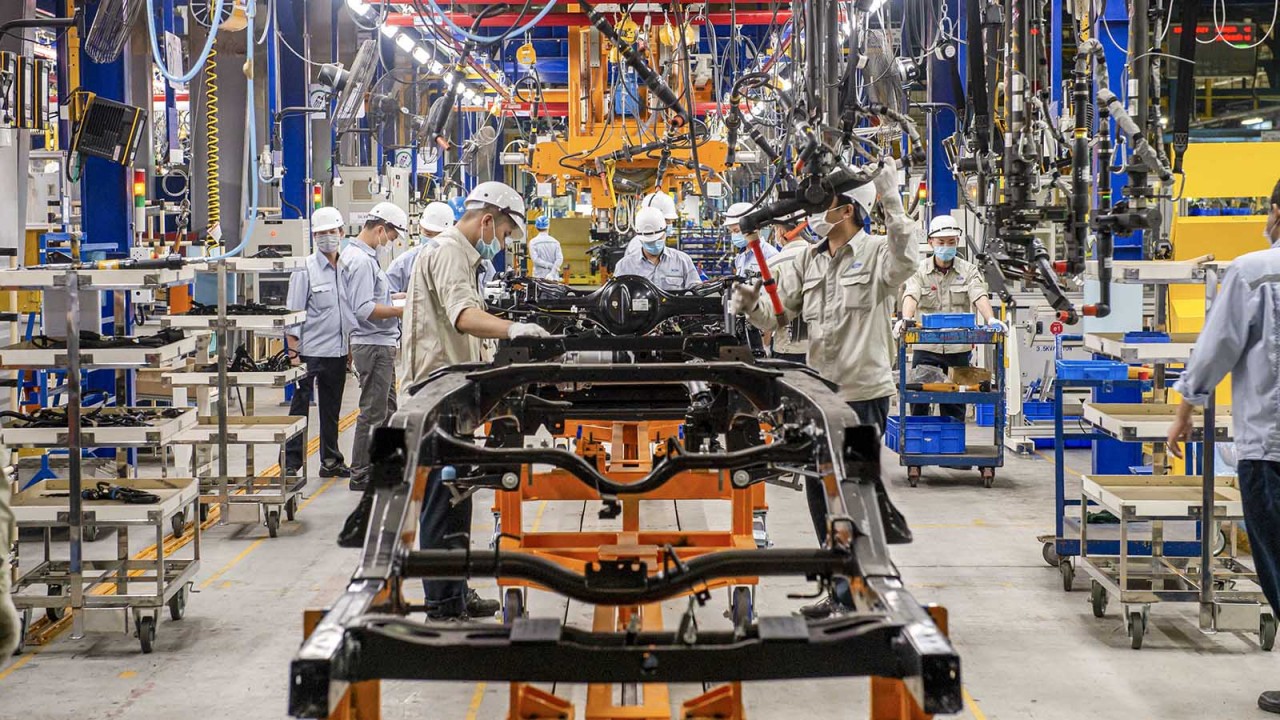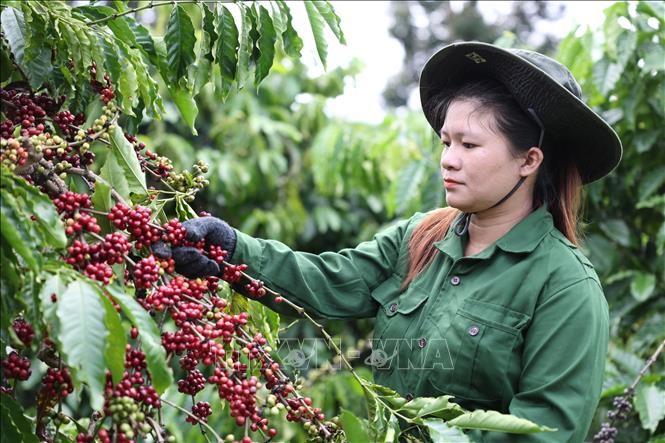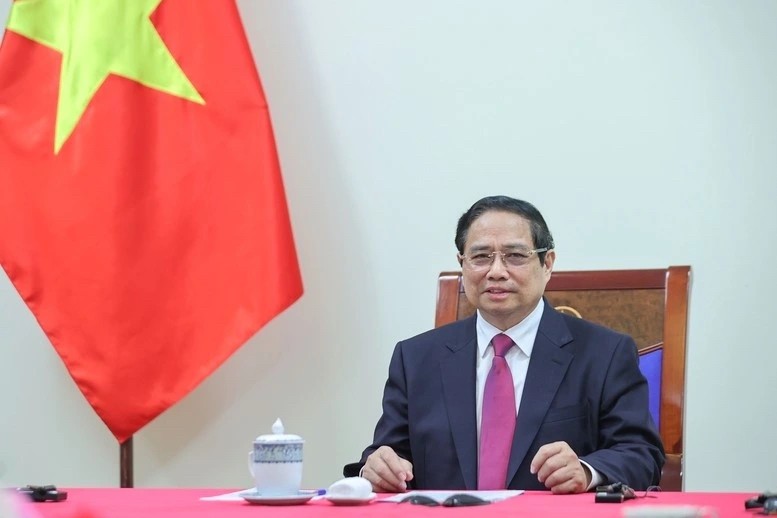Ample Room for Vietnam - Australia Trade and Investment Cooperation
Vietnam and Australia established diplomatic relations in 1973. After more than a half-century, the two countries have built an increasingly extensive and profound cooperation, in which cooperative relations in a variety of vital fields are progressing well. In particular, since 2018, when the Strategic Partnership was formed, the cooperation relationship has entered a more extensive and substantial phase, with several notable accomplishments.
In recent years, the scale of bilateral trade between Australia and Vietnam has grown significantly due to the implementation of many multilateral trade agreements. In 2022, trade turnover between the two nations was USD 15.7 billion, up 26.9% from 2021. According to data from the General Department of Vietnam Customs, the two-way import and export turnover of products in 2023 reached almost USD 14 billion, a 12% decrease from 2022. Vietnam's export turnover to Australia totaled USD 5.2 billion, down 5.3% from the same time in 2022. Vietnam's import turnover from Australia totaled USD 8.5 billion, down 15.7% from the same period in 2022. Vietnam's trade deficit from Australia totaled USD 3.3 billion, down 28.1% from the same period in 2022.
According to a representative of the Asia-Africa Market Department under the Vietnamese Ministry of Industry and Trade, based on the numbers provided above, Australia is Vietnam's tenth-largest trading partner in 2023. On the other hand, Vietnam is Australia's tenth-largest commercial partner.
In particular, Australia is now a market that provides essential raw materials for several Vietnamese industries and energy sectors, such as coal, accounting for 45.77% of the total import turnover of this category of goods from the world, and ores and minerals (44.78%) in 2023.
In terms of investment, by the end of January 2024, Australia was the 20th largest FDI investor in Vietnam, with 630 projects totaling more than USD 2 billion.
Nguyen Phu Hoa, Head of the Vietnam Trade Office in Australia, stated that bilateral trade between Vietnam and Australia recovered and grew significantly in January 2024. The entire trade turnover of goods between Vietnam and Australia in January 2024 was USD 1.25 billion, increasing 43.4% over the same period in 2023.
Vietnamese products exported to Australia are quite varied, with the majority being phone devices and components, equipment, electronic components, computers, crude oil, clothing and textiles, footwear, sandals, and seafood. In reverse, Vietnam primarily imports coal, iron ore, cotton, wheat, metals, vegetables, and fruits from Australia.
 |
| Illustrative photo: Australia is an important input material supply market for several of Vietnam's industries and energy sectors (Source: Chinh Phu Online Newspaper) |
In January 2024, Vietnam's strengths, such as coffee (+483.3%), iron and steel (+386.7%), paper and paper goods (+165.9%), and rice (+84.9%), have seen significant growth in exports to Australia, despite a small turnover.
The above results can be attributed to both nations' governments paying attention to and considering economics and commerce as one of the three pillars, and the number one pillar in the Strategic Partnership Action Program for the 2020-2023 period. As a result, based on three multilateral free trade agreements to which the two countries are parties, namely AANZFTA, CPTPP, and RCEP, the Vietnam-Australia Enhanced Economic Engagement Strategy (EEES) announced by the Prime Ministers of the two countries in November 2021 with specific measures and a clear deadline until 2025. These actions, known as significant initiatives, have both a practical basis and resources for implementation and will be assessed regularly.
Furthermore, Vietnamese representative agencies in Australia have played an important role in facilitating commercial and trade exchanges between the two countries.
Based on the recent trade cooperation successes between the two nations, we have reason to be positive about the prospects for economic and trade collaboration. The two economies have great complementarities, with Vietnam dominating electronics, machinery, textiles, and footwear, while Australia has abundant resources and high-quality fuel.
"Vietnam's products are diverse and many Vietnamese products have entered the market and been recognized for their brands and quality, such as seafood, pepper, textiles, and footwear. Furthermore, numerous items have shown considerable turnover development in recent years and have a high potential to enhance exports to Australia in the coming time, including confectionery and cereal products (+89%), rice (+19.1%), clinker and cement (+119.7%),” said Hoa.
In 2024, the Vietnam Trade Office in Australia stated that it would continue to proactively capture and update market information, as well as implement promotional activities, to assist businesses in fully utilizing free trade agreements, including AANZFTA, CPTPP, and RCEP to promote exports.
At the same time, the office would implement solutions to coordinate the Department of Trade Promotion and functional units of the Ministry of Industry and Trade to implement cooperative activities with Australian partners, particularly the Australian Trade and Investment Commission (Austrade), and organize working and exchange programs, thereby building bilateral cooperation mechanisms and contributing to the consolidation and promotion of trade cooperation.
On the commercial side, the Trade Office suggests that the domestic export business community conduct thorough market research, focusing on knowing consumer demands and tastes, as well as the rules of the host country, for products that enterprises seek to export.
 |
| Illustrative photo: Vietnam's coffee exports to Australia grew strongly in January 2024 (Source: VNA). |
Simultaneously, it is necessary to pay greater attention to product packaging, thereby ensuring product quality, particularly rules on chemical components and preservatives; and pay attention to customs procedures and packing to ensure the best delivery time to enable the products to be kept.
The Trade Office recommends that businesses in the agricultural sector strengthen quality control of planting and farming areas; complete the registration and evaluation system for granting codes of growing areas, farming areas, packaging, pre-processing, and processing facilities; and encourage digital change in agricultural production and trade. On the other hand, it is essential to improve product quality management by investing in company development and capacity creation in areas such as technology and human resources, particularly specialist marketing and market professionals.
With the support of the Vietnam Trade Office and other Vietnamese representative agencies in Australia, as well as the efforts and initiatives of domestic export enterprises, economic cooperation between Vietnam and Australia will have made significant progress by 2024.
 | Can Tho Hopes for Growing Agricultural, Education, Health Ties with Australia Can Tho's leaders had a reception and working session with a delegation of the Australian Embassy in Vietnam led by Ambassador Andrew Goledzinowski on December ... |
 | Hanoi Students Enthusiastically Learn about Australia 4,315 students of all ages from 45 schools in Hanoi entered a writing contest to share their thoughts about Australia and the Vietnam-Australia relationship to ... |
 | Vietnam - The New Rising Destination For Australian Tourists Australians love Vietnam as statistics show that visitors are flocking to the country like never before. |







